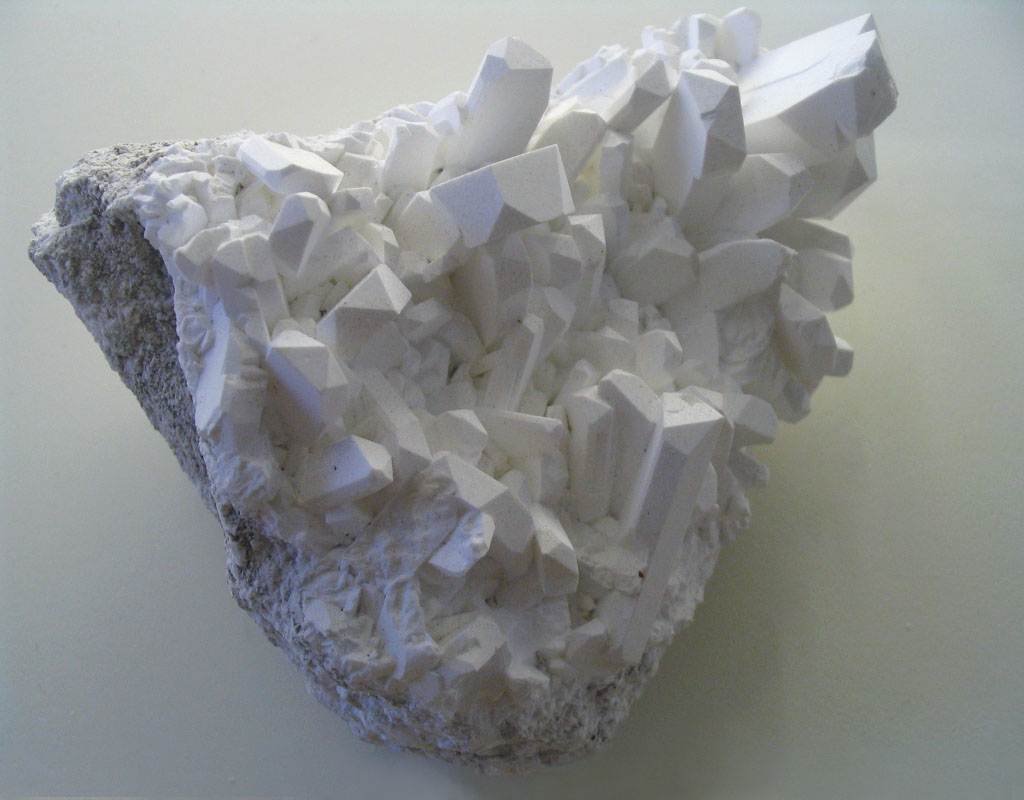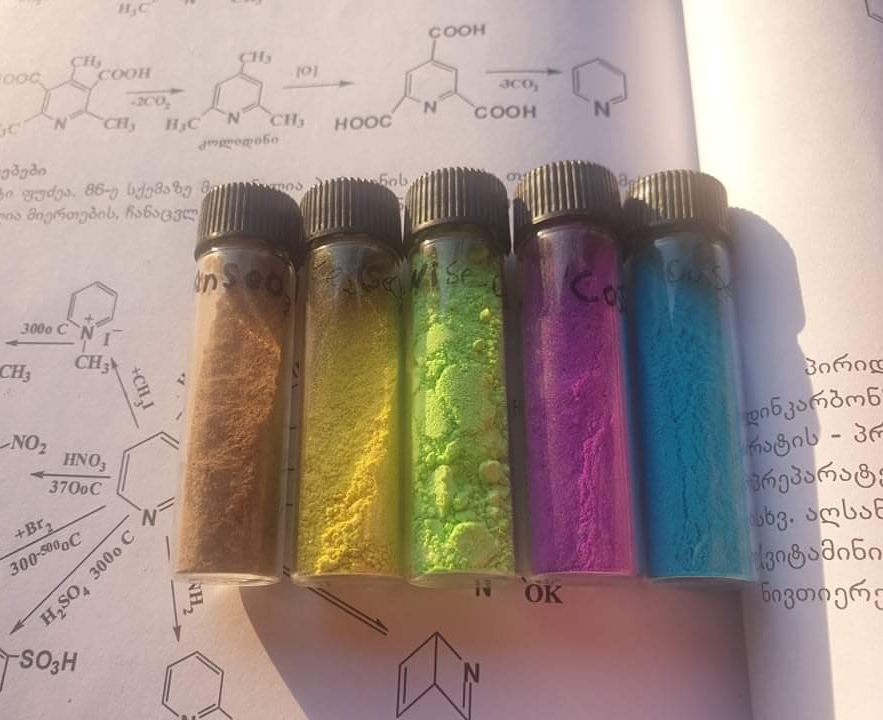|
Boroselenites
The boroselenites are heteropoly anion chemical compounds containing selenite and borate groups linked by common oxygen atoms. They are not to be confused with the boroselenates with have a higher oxidation state for selenium, and extra oxygen Oxygen is the chemical element with the symbol O and atomic number 8. It is a member of the chalcogen group in the periodic table, a highly reactive nonmetal, and an oxidizing agent that readily forms oxides with most elements as .... If selenium is replaced by sulfur, it would be a borosulfite. Boroselenites are distinct from selenoborates in which selenium replaces oxygen in borate, or perselenoborates which contain Se-Se bonds as well as Se-B bonds. The metal boroselenites were only discovered in 2012. List References {{Borates Borates Selenites ... [...More Info...] [...Related Items...] OR: [Wikipedia] [Google] [Baidu] |
Borates
A borate is any of several boron oxyanions, negative ions consisting of boron and oxygen, such as orthoborate , metaborate , or tetraborate ; or any salt with such anions, such as sodium metaborate, and disodium tetraborate . The name also refers to certain functional groups in molecules consisting of boron and oxygen, and esters with such groups, such as triethyl orthoborate . Natural occurrence Borate ions occur, alone or with other anions, in many borate and borosilicate minerals such as borax, boracite, ulexite (boronatrocalcite) and colemanite. Borates also occur in seawater, where they make an important contribution to the absorption of low frequency sound in seawater. Borates also occur in plants, including almost all fruits. Anions The main borate anions are: * tetrahydroxyborate , found in sodium tetrahydroxyborate . * orthoborate , found in trisodium orthoborate * perborate , as in sodium perborate * metaborate or , found in sodium metaborate * diborate ... [...More Info...] [...Related Items...] OR: [Wikipedia] [Google] [Baidu] |
Boroselenate
The boroselenates are chemical compounds containing interlinked borate and selenate The selenate ion is . Selenates are analogous to sulfates and have similar chemistry. They are highly soluble in aqueous solutions at ambient temperatures. Unlike sulfate, selenate is a somewhat good oxidizer; it can be reduced to selenite o ... groups sharing oxygen atoms. Both selenate and borate groups are tetrahedral in shape. They have similar structures to borosulfates and borophosphates. The borotellurates' tellurium atom is much bigger, so TeO6 octahedra appear instead. List References {{Borates Selenates Borates ... [...More Info...] [...Related Items...] OR: [Wikipedia] [Google] [Baidu] |
Borate
A borate is any of several boron oxyanions, negative ions consisting of boron and oxygen, such as orthoborate , metaborate , or tetraborate ; or any salt with such anions, such as sodium metaborate, and disodium tetraborate . The name also refers to certain functional groups in molecules consisting of boron and oxygen, and esters with such groups, such as triethyl orthoborate . Natural occurrence Borate ions occur, alone or with other anions, in many borate and borosilicate minerals such as borax, boracite, ulexite (boronatrocalcite) and colemanite. Borates also occur in seawater, where they make an important contribution to the absorption of low frequency sound in seawater. Borates also occur in plants, including almost all fruits. Anions The main borate anions are: * tetrahydroxyborate , found in sodium tetrahydroxyborate . * orthoborate , found in trisodium orthoborate * perborate , as in sodium perborate * metaborate or , found in sodium metaborate * dibor ... [...More Info...] [...Related Items...] OR: [Wikipedia] [Google] [Baidu] |
Nonlinear Optics
Nonlinear optics (NLO) is the branch of optics that describes the behaviour of light in ''nonlinear media'', that is, media in which the polarization density P responds non-linearly to the electric field E of the light. The non-linearity is typically observed only at very high light intensities (when the electric field of the light is >108 V/m and thus comparable to the atomic electric field of ~1011 V/m) such as those provided by lasers. Above the Schwinger limit, the vacuum itself is expected to become nonlinear. In nonlinear optics, the superposition principle no longer holds. History The first nonlinear optical effect to be predicted was two-photon absorption, by Maria Goeppert Mayer for her PhD in 1931, but it remained an unexplored theoretical curiosity until 1961 and the almost simultaneous observation of two-photon absorption at Bell Labs and the discovery of second-harmonic generation by Peter Franken ''et al.'' at University of Michigan, both shortly after the const ... [...More Info...] [...Related Items...] OR: [Wikipedia] [Google] [Baidu] |
Birefringence
Birefringence is the optical property of a material having a refractive index that depends on the polarization and propagation direction of light. These optically anisotropic materials are said to be birefringent (or birefractive). The birefringence is often quantified as the maximum difference between refractive indices exhibited by the material. Crystals with non-cubic crystal structures are often birefringent, as are plastics under mechanical stress. Birefringence is responsible for the phenomenon of double refraction whereby a ray of light, when incident upon a birefringent material, is split by polarization into two rays taking slightly different paths. This effect was first described by Danish scientist Rasmus Bartholin in 1669, who observed it in calcite, a crystal having one of the strongest birefringences. In the 19th century Augustin-Jean Fresnel described the phenomenon in terms of polarization, understanding light as a wave with field components in transverse po ... [...More Info...] [...Related Items...] OR: [Wikipedia] [Google] [Baidu] |
Second-harmonic Generation
Second-harmonic generation (SHG, also called frequency doubling) is a nonlinear optical process in which two photons with the same frequency interact with a nonlinear material, are "combined", and generate a new photon with twice the energy of the initial photons (equivalently, twice the frequency and half the wavelength), that conserves the coherence of the excitation. It is a special case of sum-frequency generation (2 photons), and more generally of harmonic generation. The second-order nonlinear susceptibility of a medium characterizes its tendency to cause SHG. Second-harmonic generation, like other even-order nonlinear optical phenomena, is not allowed in media with inversion symmetry (in the leading electric dipole contribution). However, effects such as the Bloch–Siegert shift (oscillation), found when two-level systems are driven at Rabi frequencies comparable to their transition frequencies, will give rise to second harmonic generation in centro-symmetric syst ... [...More Info...] [...Related Items...] OR: [Wikipedia] [Google] [Baidu] |
Orthorhombic Crystal System
In crystallography, the orthorhombic crystal system is one of the 7 crystal systems. Orthorhombic lattices result from stretching a cubic lattice along two of its orthogonal pairs by two different factors, resulting in a rectangular prism with a rectangular base (''a'' by ''b'') and height (''c''), such that ''a'', ''b'', and ''c'' are distinct. All three bases intersect at 90° angles, so the three lattice vectors remain mutually orthogonal. Bravais lattices There are four orthorhombic Bravais lattices: primitive orthorhombic, base-centered orthorhombic, body-centered orthorhombic, and face-centered orthorhombic. For the base-centered orthorhombic lattice, the primitive cell has the shape of a right rhombic prism;See , row oC, column Primitive, where the cell parameters are given as a1 = a2, α = β = 90° it can be constructed because the two-dimensional centered rectangular base layer can also be described with primitive rhombic axes. Note that the length a of the primi ... [...More Info...] [...Related Items...] OR: [Wikipedia] [Google] [Baidu] |
Band Gap
In solid-state physics, a band gap, also called an energy gap, is an energy range in a solid where no electronic states can exist. In graphs of the electronic band structure of solids, the band gap generally refers to the energy difference (in electron volts) between the top of the valence band and the bottom of the conduction band in insulators and semiconductors. It is the energy required to promote a valence electron bound to an atom to become a conduction electron, which is free to move within the crystal lattice and serve as a charge carrier to conduct electric current. It is closely related to the HOMO/LUMO gap in chemistry. If the valence band is completely full and the conduction band is completely empty, then electrons cannot move within the solid because there are no available states. If the electrons are not free to move within the crystal lattice, then there is no generated current due to no net charge carrier mobility. However, if some electrons transfer fr ... [...More Info...] [...Related Items...] OR: [Wikipedia] [Google] [Baidu] |
Monopotassium Phosphate
Monopotassium phosphate (MKP) (also, potassium dihydrogenphosphate, KDP, or monobasic potassium phosphate) is the inorganic compound with the formula KH2PO4. Together with dipotassium phosphate (K2HPO4.(H2O)x) it is often used as a fertilizer, food additive, and buffering agent. The salt often cocrystallizes with the dipotassium salt as well as with phosphoric acid. Single crystals are paraelectric at room temperature. At temperatures below , they become ferroelectric. Structure Monopotassium phosphate can exist in several polymorphs. At room temperature it forms paraelectric crystals with tetragonal symmetry. Upon cooling to it transforms to a ferroelectric phase of orthorhombic symmetry, and the transition temperature shifts up to when hydrogen is replaced by deuterium. Heating to changes its structure to monoclinic. When heated further, MKP decomposes, by loss of water, to potassium metaphosphate, , at . Manufacturing Monopotassium phosphate is produced by the acti ... [...More Info...] [...Related Items...] OR: [Wikipedia] [Google] [Baidu] |
Selenite (ion)
Selenite refers to the anion with the chemical formula . It is the oxyanion of selenium. It is the selenium analog of the sulfite ion, . Thus selenite is pyramidal and selenium is assigned oxidation state +4. Selenite also refers to compounds that contains this ion, for example sodium selenite which is a common source of selenite. Selenite also refers to the esters of selenous acid, for example dimethyl selenite Ethane ( , ) is an organic chemical compound with chemical formula . At standard temperature and pressure, ethane is a colorless, odorless gas. Like many hydrocarbons, ethane is isolated on an industrial scale from natural gas and as a petr ... . Synthesis and reactions Selenite salts can be prepared by neutralizing solutions of selenous acid, which is generated by dissolving selenium dioxide in water. The process proceeds via the hydrogenselenite ion, . Selenite reacts with elemental sulfur to form thioselenate: : Most selenite salts can be formed by heatin ... [...More Info...] [...Related Items...] OR: [Wikipedia] [Google] [Baidu] |
Monoclinic Crystal System
In crystallography, the monoclinic crystal system is one of the seven crystal systems. A crystal system is described by three vectors. In the monoclinic system, the crystal is described by vectors of unequal lengths, as in the orthorhombic system. They form a parallelogram prism. Hence two pairs of vectors are perpendicular (meet at right angles), while the third pair makes an angle other than 90°. Bravais lattices Two monoclinic Bravais lattices exist: the primitive monoclinic and the base-centered monoclinic. For the base-centered monoclinic lattice, the primitive cell has the shape of an oblique rhombic prism;See , row mC, column Primitive, where the cell parameters are given as a1 = a2, α = β it can be constructed because the two-dimensional centered rectangular base layer can also be described with primitive rhombic axes. Note that the length a of the primitive cell below equals \frac \sqrt of the conventional cell above. Crystal classes The table below or ... [...More Info...] [...Related Items...] OR: [Wikipedia] [Google] [Baidu] |






